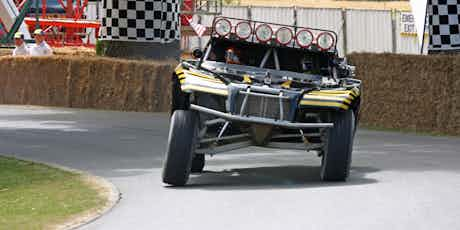What is car body roll or lean?
July 09, 2015 by Mike Vousden

If you’ve researched what car to buy next, you’ll probably have read numerous reviews referring to how much lean or roll a car displays through corners. Reviewers tend to prefer less but why? What is body lean, and should you avoid a car that leans a lot?
What is body roll?

Body roll (or lean) happens when you turn into a corner. As your car begins to turn, its weight is thrown to the outside of the corner, causing your car to roll in that direction. Put simply, as you turn left you are thrown to the right and turning right throws you left.
Your wheels are in constant contact with the ground so always stay on the same level but your car’s body (and, by extension, the cabin in which you’re sitting) sit on top of springs attached (indirectly) to your wheels – allowing the car’s body to lean independently of the wheels.
Why does it happen?

Thanks to something called centrifugal force – the same thing that dries your clothes in a tumble-drier. Imagine swinging a weight attached to a chain around your head – the faster you swing the weight, the more it pulls more on the chain as the centrifugal forces build up.
The same thing happens when you turn your car – it becomes the weight and the corner becomes the arc the weight takes around your head. As your cornering speed increases, the force pushing you to the outside of the turn increases. These forces are absorbed by your car’s suspension resulting in the body leaning to the outside of the corner.
Is it bad?

Put simply, yes and no. Reviewers tend to criticise cars that lean too much because excess rolling dulls the inputs of the steering. A car without much lean will stay more level during corners and there will be less of a delay between turning the steering wheel and the car responding.
While a car with more lean will have a longer delay between turning the steering wheel and it responding as the suspension absorbs the centrifugal forces, it can sometimes be more comfortable. Lean occurs as a result of long suspension travel (on SUVs or 4x4s) or a softly-tuned setup, but this typically makes the car absorb bumps better and be more comfortable.
What does this mean for me?

In essence, you need to ask yourself how you want to feel when driving. A car that rolls a little more will usually be more comfortable so will suit drivers that want to be cosseted from the road’s imperfections. A car that rolls less will probably be less comfortable but give the driver a greater sense of being in control of the car thanks to its more faithful responses.
As a very rough guide, BMWs tend to offer a more sporty driving experience so don’t lean much in corners. Brands like Volvo, however, trade on being comfortable so will permit a little more body roll for the sake of a softer ride.